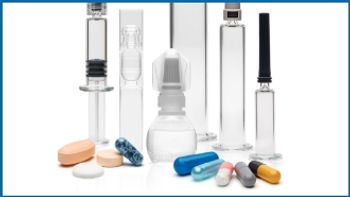
- Pharmaceutical Technology-08-02-2015
- Volume 39
- Issue 8
Taking the Pulse of Manufacturing Trends and Equipment Use
Each year, Pharmaceutical Technology surveys readers who work in finished drug manufacturing, both solid dosage and parenterals, to learn how well today’s equipment meets their needs. The survey also examines industry issues and trends. For 2015, themes included continuous manufacturing, process analytical technology (PAT), quality by design (QbD), and quality metrics (1).
Results suggest that most professionals who operate, supervise, or engineer pharmaceutical manufacturing systems are satisfied with existing equipment and innovation. Responses suggest that more readers are using PAT, QbD, and continuous manufacturing, but that lack of knowledge may be limiting growth of these technologies.The following is a summary of findings from the 2015 survey.
Solid-dosage equipment
Respondents who use solid-dosage equipment indicated that they are, for the most part, satisfied with the equipment they are currently using. Ratings were similar to those given in 2014 (2). As shown in Figure 1, in six categories (encapsulation, tablet compression, coating, packaging, mixing/blending, and granulation), nearly 90% or more said utility was excellent, and that they were completely satisfied or replied with “good, but see areas for improvement.”
Approximately 80% of respondents indicated that powder transfer/materials handling and feeding/dispensing equipment were excellent or good. In-process testing/PAT and process control/automation, however, were indicated by one-third or more of respondents as “poor, needs significant improvement” or “inadequate, many problems.”
Integration with manufacturing and business systems, which was a new category for 2015, also ranked relatively low. Innovation is generally keeping pace with needs in these areas, respondents said, although system integration stood out as a potential area for improvement, with 23% of respondents stating that solutions are not available for many issues.
Continuous solid-dosage manufacturing
Just over half (53%) of the respondents who use solid-dosage equipment indicated that they employ continuous processing either overall or in select unit operations, which is an increase from the 40% who responded this way in 2014. The expectation for technological advances in continuous manufacturing is high. Approximately 27% believe that in the next five years, technology will evolve to permit end-to-end continuous manufacturing from raw materials to finished drug product without a break between API and drug product. In addition, 29% believe that technology will evolve to permit fully continuous manufacturing of solid-dosage drug products, with the conventional break between API and drug-product manufacturing, and industry will begin to use these processes. Approximately 30% believe technology will evolve to permit fully continuous manufacturing, but industry adoption will lag or use it in select unit operations.
More than half of respondents said that capital costs and insufficient expertise were barriers to implementing continuous manufacturing at their facilities. In addition, 41% complained that the PAT solutions available in the market were not sufficient to enable continuous processing, citing that as a barrier, while 37% said that concerns about regulatory acceptance were impeding use of continuous manufacturing. Less than 30% of respondents thought there was a lack of equipment available in the market.
Parenteral equipment
Satisfaction with equipment used in parenteral manufacturing was high (see Figure 2), and the percentages of respondents rating this equipment as “excellent” or “good” were generally similar to or higher than those in 2014 (2).
Nearly all areas had satisfaction rates of approximately 80% or more. One exception was that more than a quarter of respondents noted significant problems in integrating systems for existing equipment; 15% noted a need for more innovation in this area. Just over 10% of respondents noted a lack of innovation in process control and automation; in all other areas, more than 90% of respondents were satisfied with the level of innovation.
High-potency containment
Of respondents in both solid-dosage and parenteral manufacturing who use containment for high-potency drug production, just over half indicated that their company’s level of activity (either in-house or outsourced) had increased in the past year. When asked to choose the one most challenging area for high-containment/high-potency, responses were diverse, as shown in Figure 3.
Equipment metrics
Keeping track of equipment problems and analyzing trends to improve operations are not new concepts in manufacturing. A pharmaceutical industry-wide metrics initiative, however, will soon be launched. Regulators, industry associations, and manufacturers have been collaborating to identify appropriate quality metrics, and FDA published draft guidance on July 29, 2015. The Quality Metrics Project Team of the International Society for Pharmaceutical Engineering (ISPE) concluded its initial pilot program (Wave 1) in April 2015, and in June announced a second pilot program (Wave 2). These metrics will be used by regulators for risk-based plant inspections, but pharmaceutical manufacturers can also use them for continuous improvement. Nearly 90% of respondents to this year’s survey believe that metrics and trend analysis enhances the ability to improve equipment operation. Nearly three-quarters of respondents use trend analysis to evaluate equipment performance, and 65% have metrics in place to measure equipment failure.
A little more than half of survey respondents, in both solid-dosage and parenteral equipment areas, were aware of equipment failures that had led to significant downtime or quality problems in the past year. These failures were attributed somewhat evenly to the following broad categories of root causes: contamination or cleaning (29%), utilities (28%), process validation (20%), and nonconformance (19%); other causes (4%) were mechanical issues with the equipment itself.
QbD and PAT
In the four equipment areas surveyed (see Figure 4), at least half of respondents apply QbD to some extent, and 20-30% fully use QbD (in process development/optimization). Some (16% in solid dosage, 22% in lyophilization, and 27% in sterile/aseptic processing) still do not use QbD.
Barriers to implementing or using QbD principles (multiple answers allowed) included lack of knowledge or training (53%), regulatory guidance clarity (50%), management buy-in (34%), and availability of necessary equipment/software tools (30%). Another barrier noted was the cost and time required. Approximately 10% say no barriers exist.
PAT can include many types of tests to measure in-process materials. Availability of PAT has increased, although a lack of standard solutions and experience still hinders use (3). Figure 5 shows the breakdown of PAT use by survey respondents in five manufacturing areas. In all areas, 25-33% of respondents use PAT, and another 26-44% plan to implement PAT use in the coming year. Respondents indicated that the benefits and drivers for using PAT (multiple answers allowed) include better process understanding (44%), increased efficiency (40%), shorter process times (34%), and reduced costs (31%).
Innovation outlook
When asked to identify the most important areas for innovation in pharmaceutical manufacturing, respondents noted a wide range of issues, including continuous manufacturing, single-use technologies, PAT, process control, and QbD. Others noted cost as an important issue, including making single-use and other new technologies more affordable, as well as lowering costs by reducing downtime and running processes more efficiently.
Respondents' profilesPharmaceutical Technology’s Equipment and Manufacturing Survey targeted individuals in production and engineering. The survey was conducted by email in May and June 2015. Approximately 34% of respondents were from innovator pharmaceutical companies, 29% were from generic-drug companies, and 22% were from contract manufacturers. The remaining respondents (less than 6% each) included consumer healthcare companies making over-the-counter products, equipment or machinery vendors, excipient and raw material suppliers, and consultants. Respondents were split nearly evenly between solid-dosage and parenteral drug manufacturing. Companies represented by the survey manufacture products in diverse geographies. Respondents could choose more than one region, and they indicated production in: the US (61%), Canada (21%), Mexico/Central/South America (21%), Europe (51%), Asia (41%), and other regions (13%), which included Africa, Australia, India, Israel, and Russia.
References
1. 2015 Pharmaceutical Technology’s Equipment and Manufacturing Survey.
2. J. Markarian, Pharm. Technol. 38 (7) 28-31 (2014).
3. A. Siew, Pharm. Technol. 39 (6) (2015).
Article DetailsPharmaceutical Technology
Vol. 39, No. 8
Pages: 24-28
Citation: When referring to this article, please cite it as J. Markarian, “Evaluating Package Integrity,” Pharmaceutical Technology39 (4) 2015.
Articles in this issue
over 10 years ago
Getting Comfortable With Leanover 10 years ago
Black Specks in Tablet Stability Samplesover 10 years ago
Environmental Containment Performance—Is There Accountability?over 10 years ago
Implementing Electronic Production Recordsover 10 years ago
Understanding Risks in Pharmaceutical Shippingover 10 years ago
Outsourcing Becoming More Cost Competitiveover 10 years ago
Regulation of Medical Devices and Companion Diagnosticsover 10 years ago
Campaign Against Fake Drugs Gains Momentumover 10 years ago
Defining Crucial CAPA Componentsover 10 years ago
The Bottom Line on Pipeline ProgressNewsletter
Get the essential updates shaping the future of pharma manufacturing and compliance—subscribe today to Pharmaceutical Technology and never miss a breakthrough.





